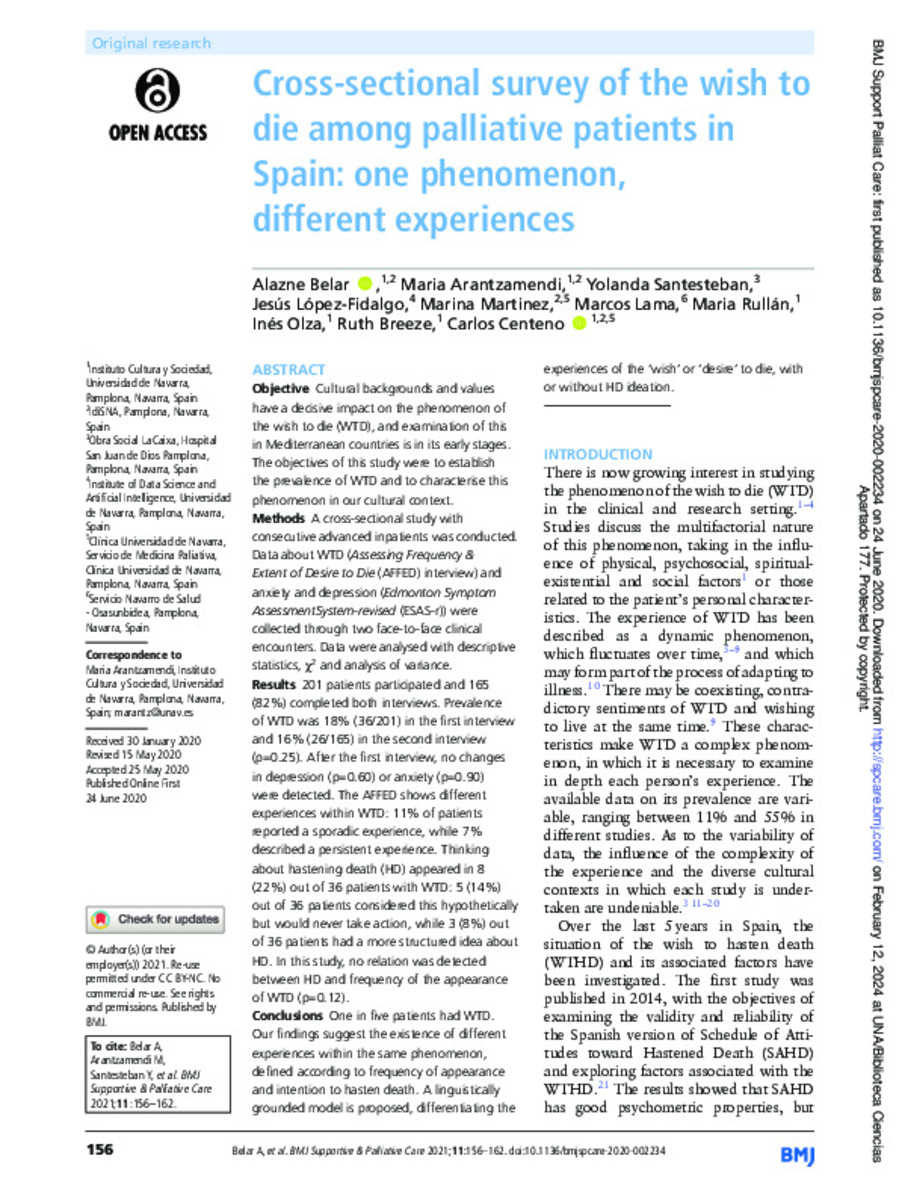Cross-sectional survey of the wish to die among palliative patients in Spain: one phenomenon, different experiences
Palabras clave :
Wish to die (WTD)
Assessing Frequency & Extent of Desire to Die (AFFED)
Edmonton Symptom Assessment System-revised (ESAS-r)
Mediterranean countries
Cultural backgrounds
Fecha de publicación :
2021
Nota editorial :
© Author(s) (or their
employer(s)) 2021. Re-use
permitted under CC BY-NC
Cita:
Martinez-Garcia, M. (Marina); Belar, A. (Alazne); Arantzamendi-Solabarrieta, M. (María); et al. "Cross-sectional survey of the wish to die among palliative patients in Spain: one phenomenon, different experiences". BMJ Supportive & Palliative Care. 11 (2), 2021, 156 - 162
Aparece en las colecciones:
Estadísticas e impacto
0 citas en

0 citas en

Los ítems de Dadun están protegidos por copyright, con todos los derechos reservados, a menos que se indique lo contrario.











